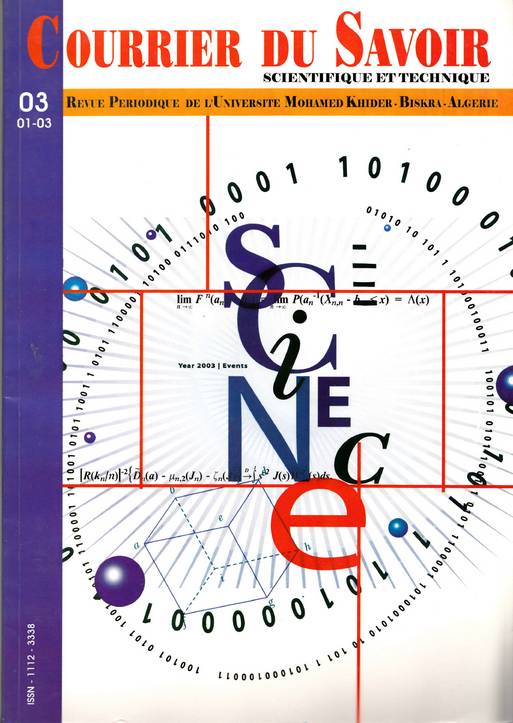MECANISMES DE FORMATION DES DEFAUTS DANS LE a-Si:H A L'EQUILIBRE ET SOUS L'ILLUMINATION. DEFECT FORMATION MECHANISMS IN a-Si:H AT EQUILIBRIUM STATE AND UNDER LIGHT-SOAKING
Résumé
RESUME
A l'équilibre thermodynamique, la création des défauts dans la structure du silicium amorphe hydrogéné (a-Si:H) est le résultat
de la conversion des liaisons faibles en liaisons pendantes provoquée par la diffusion de l'hydrogène. L'application de la loi de
l'effet de masse à cette réaction suivant le modèle defect pool permet la détermination de la densité d'états des défauts dans le
gap d'énergie. Lorsque le matériau est exposé à la lumière, la densité totale des défauts augmente. Nous proposons un nouveau
modèle pour simuler la cinétique de création des défauts induits par la lumière selon lequel l'évolution de la densité totale des
défauts se trouve en accord avec les mesures expérimentales généralement observées.
ABSTRACT
At thermodynamic equilibrium state, the defect creation process in hydrogenated amorphous silicon (a-Si:H) is the result of
dangling bonds weak bonds conversion induced by hydrogen diffusion. The application of the law of mass action to this
reaction according to defect pool model allows the determination of the defect state density in the gap. When the material is
exposed to light, the total defect density increases. We propose a new model to simulate the light induced defect creation
kinetic where the total defect density evolution is found to agree with observed experimental measurements.
Références
[2] Smith, Z.E. and Wagner, S. Phys Rev lett 59 688
(1987).
[3] Winer, K. Phys Rev B41 12150 (1990).
[4] Powell, M.J. and Deane, S.C. Phys Rev B48 10815
(1993).
[5] Powell, M.J. and Deane, S.C. Phys Rev B53 10121
Mécanismes de formation des défauts dans le a-Si:H à l'équilibre et sous l'illumination
79
(1996).
[6] Schumm, G. and Bauer, G.H. Philos Mag B64 515
(1991).
[7] Schumm, G. Phys Rev B49 2427 (1994).
[8] Nickel, N.H. and Jackson, W.B. Phys Rev B51 4872
(1995).
[9] D.L. Staebler, C.R. Wronski, Appl. Phys. Lett. 31
(1977) 292.
[10] M. Stutzmann, W.B. Jackson, C.C. Tsai, Phys. Rev. B
32 (1985) 23.
[11] W.B. Jackson, Phys. Rev. B 41 (1990) 10257.
[12] Z.Y. Wu, J.M. Siefert, B. Equer, J. Non-Cryst. Solids
137-138 (1991) 227.
[13] C. Godet, P. Roca i Cabarrocas, J. Appl. Phys. 80
(1996) 97.
[14] C. Godet, Philos. Mag. B 77 (1998) 765.
[15] H.M. Branz, J. Non-Cryst. Solids. 266-269 (2000)
391.
[16] R. Biswas, Y.-P. Li, B.C. Pan, MRS Symp. Proc. 609
(2000) A3.5.
[17] K. Morigaki, H. Hikita, J. Non-Cryst. Solids. 266-269
(2000) 410.
[18] M.J. Powell, R.B. Wehrspohn, S.C. Deane, J. Non-
Cryst. Solids. In press.
[19] M. S. Aida, F. Youla, N. Touefek, D. Nebti, A.
Benzagoutta, Mate. Chem. Phys. 74 (2002) 251.
[20] Tiedje, T. and Rose, A. Sol State Com 37 49 (1980).
[21] Orenstein,


